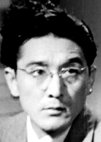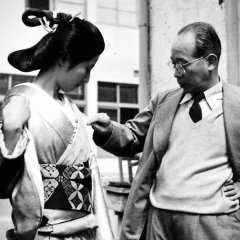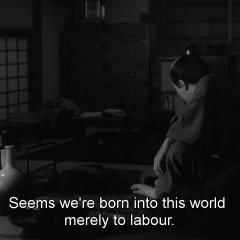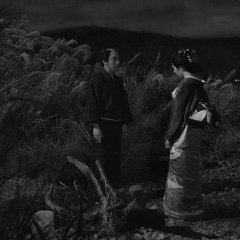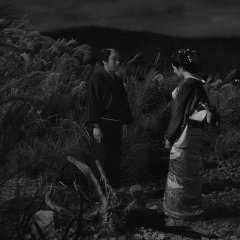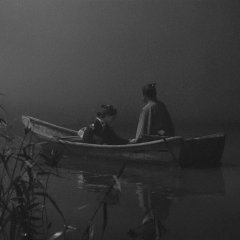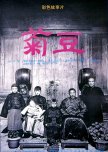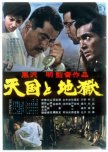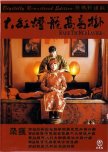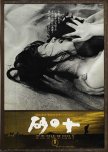 An Ultra Fan's Guide to Kagawa Kyoko
An Ultra Fan's Guide to Kagawa Kyoko - Português (Portugal)
- English
- magyar / magyar nyelv
- dansk
- Título original: 近松物語
- Também conhecido como:
- Diretor: Mizoguchi Kenji
- Roteirista: Yoda Yoshitaka
- Gêneros: Drama
Elenco e Créditos
- Kagawa Kyoko Papel Principal
- Hasegawa KazuoMoheiPapel Principal
- Tanaka HaruoGifuya DokiPapel Secundário
- Ozawa EitaroSukeemonPapel Secundário
- Minamida YokoOtamaPapel Secundário
- Shindo EitaroIshunPapel Secundário
Resenhas

The Crucified Lovers tells the story of an unfortunate love affair between a servant and his master's wife. The film is quite simple and slow placed but therein lies it's beauty. The lack of action and multiple side stories forces you to solely focus on the couple and their plight. The movie itself is beautiful-I always find these classic Japanese films to have a serene and majestic quality to them. A simple movie with a simple message: a life with love, however brief, is much preferred to living 100 years without it.
Esta resenha foi útil para você?

Esta resenha pode conter spoilers
"People's fates take such strange turns"
Going into a film titled The Crucified Lovers, it was a safe bet that the romance was not going to be filled with sunshine and roses. Mizoguchi took the 17th century ideals of honor and tradition and tore them open exposing the hypocrisy and cruelty underneath.Osan was a young woman married to a man thirty years her senior. Ishun was a wealthy owner of the printing company that supplied the Imperial court with calendars. Mohei was Ishun's right hand man who was nearly worked to death in his job. Otama served the family and was the target of Ishun's unwanted nightly advances. Though Ishun offered Otama her own house, spent lavishly on court officials and loaned important people large sums of money, he was unwilling to spare what amounted to pocket change to Osan's brother to save the family home. His miserly short-sightedness and lecherous ways along with Osan's brother's spendthrift habits would bring down both families while blaming it on others.
When Osan and Mohei were caught together in a completely innocent situation, Ishun accused them of adultery and ordered Osan to kill herself. He planned to have Mohei arrested for stealing his seal. The situation played right into Ishun's plan to rid himself of Mohei who was Otama's love interest. Mohei escaped and Osan fled, incidentally meeting up later. After attempting to leave the area with men on their trail, they decided to commit suicide at a lake. When Mohei confessed his love for her, she returned it and decided to live. Much of the rest of the film played out like The Fugitive with the couple on the run, constantly being chased. They were turned away by family who feared culpability in their crimes. Ishun wanted the situation handled quietly so his business would not be ruined by scandal. What he didn't know was that his own traitorous worker was feeding information to his rival. After the couple was captured and refused to be parted everything came unraveled for the master printer. Not only did his rival revel in his downfall, but the many noblemen who owed copious amounts of money to him hastened his ruin. The lovers went to their doom hand in hand serenely smiling finally free from the cruel constraints of the world they lived in.
Mizoguchi framed much of the film in tight restrictive spaces. Only when the lovers committed to staying together in the mountains did the spaces open up freeing them to breathe. Kagawa Kyoko was ethereal as the traditional wife, Osan. As Osan was forced to live on the run, Kagawa showed her fear, despair, and then a love that lifted her spirits above their dire situation. Hasegawa Kazuo was 23 years older than Kagawa but was able to convey the loyalty to his master's family and his conflicted love for Osan as well.
The lovers were not only guilty of adultery but also crossing class lines which was a serious violation in and of itself. The hypocrisy that men could sleep with anyone they wanted while a woman caught in adultery was literally crucified if her husband didn't kill her first was brought to the fore. As the female servants reacted to two lovers being paraded to their deaths, they wondered what horrific crime they had committed to suffer one of the most awful deaths. They hadn't killed anyone. While Osan and Mohei were initially innocent, Ishun's activities were reprehensible from the start. Had Ishun been willing to pry his purse open for a family member and kept his hands to himself, this entire tragedy might have been avoided. No one seemed to care about Osan and Mohei's fate, compassion was far outweighed by a rigid class and social system that had no room for error when it came to misbehaving women.
The Crucified Lovers aka A Tale from Chikamatsu ran the gamut of emotions as Mizoguchi tackled social traditions and gender rules. Beautifully filmed and well-acted, the tragic story of two falsely accused people who briefly found love and happiness across class lines and on the run was a challenging but rewarding film to watch.
8/23/23
Esta resenha foi útil para você?




